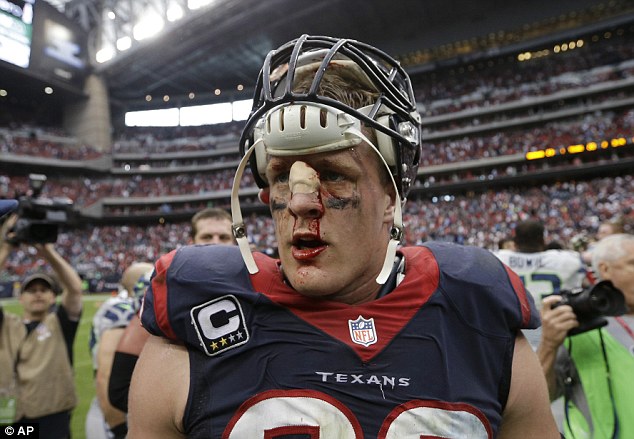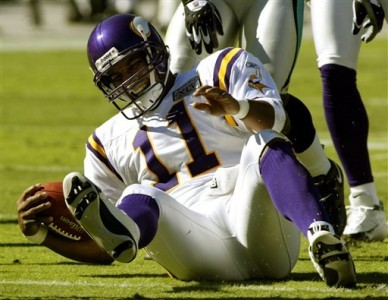Worst Injuries in Football History
NFL football is the most popular sport in the United States, which comes as little surprise to most Americans. From opening day to the Super Bowl, football is a weekly phenomenon. However, between all the dazzling Odell Beckham Jr. one-handed grabs and Aaron Rodgers successful Hail Marys, there’s an unsettling truth lurking: Football is – by far – the most dangerous popular sport.
In 2013, more than 4,500 NFL players reached a $765 million settlement with the league after being diagnosed with and/or suffering from chronic traumatic encephalopathy (CTE), a brain disease often caused by a severe blow to the head. CTE is impossible to diagnose until death, but many players report the symptoms, which begin to show around 8-10 years after the infliction. CTE sufferers can experience dizziness, headaches and disorientation, in addition to memory loss, poor judgment and erratic behavior.
While a big tackle isn’t necessarily going to inflict future CTE among the player being hit every time, there’s no arguing that the potential for CTE is a growing concern every time players take the field. It’s a sad reality that, when you turn on a professional football game, it’s extremely likely that players you’re watching will develop CTE symptoms down the line, purely because how the game is played. No other sport involves as much contact or bang-bang tackles. Football leads significantly as the sport with the most head injuries.
When looking at the types of injuries that are fairly commonplace in the sport, certain gruesome injuries come to mind that effectively demonstrate the sport’s high-risk nature, even beyond the brain:
Mike Utley’s Vertebrae Injury
Mike Utley, a former Lions offensive lineman, suffered perhaps the sport’s more gruesome injury when he severely injured his sixth and seventh vertebrae against the LA Rams on Nov. 17, 1991. Although he gave the crowd a thumbs-up as he was removed from the field, his spinal cord injuries made him a paraplegic. Although his career was finished by the injury, Utley has turned it into a positive, starting the Mike Utley Foundation, which supports treatment for spinal cord injuries.
Darryl Stingley’s Spinal Cord and Vertebrae
In 1978, Patriots wide receiver Darryl Stingley had a bang-bang collision with Raiders defensive back Jack Tatum. The result was two broken vertebrae and a compressed spinal cord for Stingley, who spent the rest of his life in a wheelchair before dying in 2007 from quadriplegia complications contributing to heart disease and pneumonia.
Reggie Brown’s Spinal Cord
A first rounder in the draft, linebacker Reggie Brown was poised for stardom with his new team, the Lions. Against the Jets in the final season game of 1997, he suffered a spinal cord contusion, resulting in a horrifying scene of him lying motionless on the turf for 17 minutes before medics performed live-saving CPR. Fortunately, Brown is presently healthy and fully mobile.
Daunte Culpepper’s Ligament Tear
Daunte Culpepper was a three-time Pro Bowl pick attempting to right the ship on a 2-4 Vikings team, until he experienced a devastating injury in a 38-13 loss at Carolina. With the knee bending awkwardly in a very visual way, it was clear that Culpepper would miss the rest of the season. Ultimately, the injury proved to end his career. He played just 24 games – mostly ineffectively – his final four years. It’s an example of how a devastating injury can turn a promising career into a derailed one on a single play.
Although players like Culpepper and Reggie Brown were able to recover fully for the most part, there are thousands of players impacted by severe NFL injuries that can end up contributing to suicide and other illness. While the sport is thrilling entertainment, it does have its dark side.
















